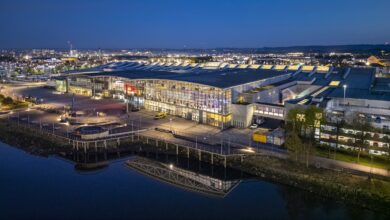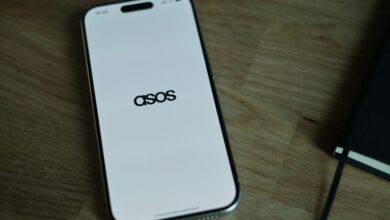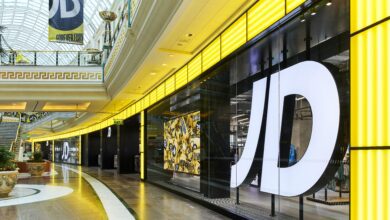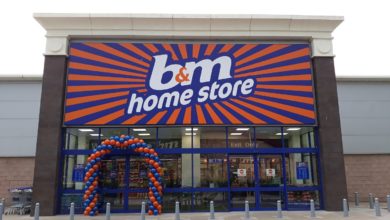
Register to get 1 free article
Reveal the article below by registering for our email newsletter.
Want unlimited access? View Plans
Already have an account? Sign in
When it comes to retail, the Internet of Things (IoT) continues to move centre stage, and not without good reason. It helps businesses understand their audiences better, deliver more meaningful experiences and reduce costs. Yet many people don’t realise that IoT made its debut in retail more than 20 years ago, when P&G was exploring the possibilities of linking its RFID system to the internet.
Originally, IoT in retail focused on helping businesses manage product inventory at scale, but smart devices have now emerged to support the customer experience in more direct, sophisticated ways. And since those formative years, IoT has picked up the pace, equipping retailers with a new set of tools to increase visibility and leverage automation. Knud Kegel, VP Product of leading cellular IoT connectivity provider, EMnify, takes a look at five of the most significant use cases for IoT in retail today.
1: Improving inventory management
There are no two ways about it. Keeping shelves stocked and the supply chain running smoothly is fundamental to retail success. And as retail operations scale up, inventory management becomes increasingly difficult.
Effective management requires continuous coordination. Some products need to be stored at specific temperatures, others under particular lighting conditions. And if the environment changes, the inventory could be lost.
By implementing IoT sensors, these changes can be detected and employees can be alerted in time to preserve products and prevent waste. IoT sensors can also monitor the performance of commercial freezers, fridges and ovens to recognise maintenance problems before they lead to equipment failures and the loss of inventory.
There are even smart shelves with weight sensors, cameras and other devices that alert staff to low shelf inventory or improperly displayed products. Not only do these devices help retailers keep inventory on display and improve product visibility, they can also aid in deterring and identifying theft.
And of course, IoT still serves its original purpose in retail, of connecting RFID systems to the internet to help retailers track where products are.
2: Enabling in-store traffic analytics
Tracking the number of people in a store and monitoring their movements as they shop enables retailers to control capacity, identify congestion, optimise store layouts and reduce waiting times.
Consumers are already accustomed to being monitored at retail. They know cameras are located throughout stores. By introducing IoT sensors, retailers are just repurposing and supplementing their security systems.
Light Detection and Ranging (LiDaR) strips and blurred vision cameras can detect the number of people queuing in line. This allows retailers to evaluate wait times for checkouts and take measures to reduce waits in the busiest lines. Sensors can also be used to track the flow of customers through the store. Mapping the most common paths and identifying where customers linger can help to maximise merchandising opportunities.
3: Creating new customer experiences
Beacons are an increasingly popular solution for engaging with customers both inside and outside a store. Using IoT sensors, beacons transmit app messages directly to a consumer’s phone.
These messages use deals and customer information to entice people to enter when they’re nearby or to divert their attention toward particular parts of the store, ideally based on what they’ve purchased in the past.
4: Streamlining asset tracking
Whether tracking essential equipment or individual customer orders, the IoT makes it happen. Connected GPS devices allow retailers to locate the floor waxer, identify who left the forklift behind the warehouse, or where the missing shopping trolleys ended up.
And for customer orders, RFID tags enable you to track product shipments as they reach checkpoints on the journey to their final destination.
5: Connecting PoS terminals
Point of sale systems are a critical component of every retail business, particularly in the new post-COVID world, and they rely heavily on connectivity.
Whether customers are using a vending machine, a self-service checkout or a kiosk, they expect the experience to be smooth, simple and secure. IoT deployment enables retailers to connect these assets to the cloud. Each transaction can send data in real-time, updating inventory information and sales figures. This ensures stock levels are up to date, information is accurate and customers receive the levels of service that they demand.
IoT and the future of retail
IoT developers continue to innovate and create new solutions that benefit retailers and consumers alike. In a shifting retail landscape, harnessing IoT technologies could allow you to differentiate your bricks and mortar offering, enticing more customers, improving your footfall and growing your margins.
And whatever you decide to do with IoT, the best way to do it is by implementing cellular IoT. It’s the only option that ensures your devices are always connected, secure and operating everywhere.
Knud Kegel
Knud Kegel is VP Product at EMnify, the global cellular IoT communication platform provider







